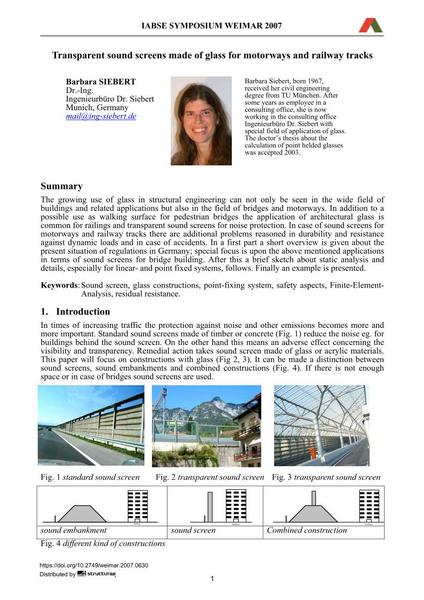Transparent sound screens made of glass for motorways and railway tracks

|
|
|||||||||||
Bibliografische Angaben
| Autor(en): |
Barbara Siebert
|
||||
|---|---|---|---|---|---|
| Medium: | Tagungsbeitrag | ||||
| Sprache(n): | Englisch | ||||
| Tagung: | IABSE Symposium: Improving Infrastructure Worldwide, Weimar, Germany, 19-21 September 2007 | ||||
| Veröffentlicht in: | IABSE Symposium Weimar 2007 | ||||
|
|||||
| Seite(n): | 556-557 | ||||
| Anzahl der Seiten (im PDF): | 7 | ||||
| Jahr: | 2007 | ||||
| DOI: | 10.2749/weimar.2007.0630 | ||||
| Abstrakt: |
The growing use of glass in structural engineering can not only be seen in the wide field of buildings and related applications but also in the field of bridges and motorways. In addition to a possible use as walking surface for pedestrian bridges the application of architectural glass is common for railings and transparent sound screens for noise protection. In case of sound screens for motorways and railway tracks there are additional problems reasoned in durability and resistance against dynamic loads and in case of accidents. In a first part a short overview is given about the present situation of regulations in Germany; special focus is upon the above mentioned applications in terms of sound screens for bridge building. After this a brief sketch about static analysis and details, especially for linear- and point fixed systems, follows. Finally an example is presented. |
||||
| Stichwörter: |
Finite-Elemente-Analyse
|
||||
